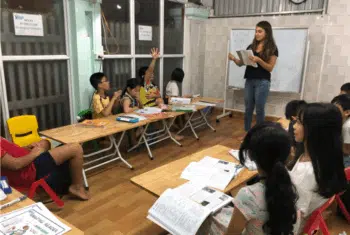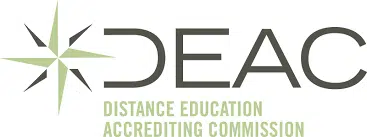Teaching In Europe Or Asia: Which Should You Choose?
Join a global community of over 200,000 TEFL teachers working throughout the world! Enrol me!
TEFL-qualified but not sure where to go? Both Europe and Asia’s booming English teaching sectors beckon, each with a distinct appeal. You may find yourself gravitating towards one over the other, and chasing that dream destination is part of the fun.
But, when considering living and working there, look beyond the glossy brochures before making your move. Let’s put the tourist clichés aside and get down to the factors that could make or break your experience in these two popular TEFL destinations.
Job market overview
ESL demand and growth in Asia
Asia is an ESL juggernaut in terms of market share, as English is a must-have skill that helps drive the booming Asian economies forward.
The Asia-Pacific region looks set to hold its crown as the dominant player through 2033. Countries like China, South Korea, Japan, and Vietnam are hungry for English skills to fuel their economic engines.
English proficiency is a golden ticket for locals chasing better careers, global business opportunities, or social mobility.
The “Four Asian Tigers” — Hong Kong, Singapore, South Korea, and Taiwan — owe much of their meteoric rise to prioritising English education, which has cemented their status as economic powerhouses.
ESL demand and growth in Europe
Europe’s ESL market is smaller but growing steadily. English is the continent’s unofficial lingua franca, essential for business, tourism, and even casual chats in multicultural cities.
Read more: Is There Really A Demand For TEFL Teachers?
Popular countries and hiring seasons
Knowing where the TEFL action is — and when to apply — can make all the difference, as Asia and Europe have different hiring rhythms and TEFL hotspot zones.
Asia’s top teaching destinations and when to apply
- China: Massive demand in urban hubs like Shanghai and Beijing, as well as smaller towns, with jobs in public schools, private academies, and kindergartens.
- South Korea: Known for well-paid public school roles and private hagwons, and perks like free housing and flight reimbursements.
- Japan: Home to the JET Programme for public schools and conversational eikaiwas in cities like Tokyo.
- Vietnam: Affordable living and growing opportunities in Hanoi and Ho Chi Minh City.
- Thailand: Laid-back life in Bangkok or Chiang Mai, with roles in schools and language centres.
- Taiwan: High salaries and a welcoming expat community in Taipei.
- Cambodia: Lower pay offset by rich cultural immersion in Siem Reap.
When to apply
Jobs are year-round due to high demand, with peak hiring seasons in February–March and August–October, aligning with public school calendars. Private language schools and academies hire more flexibly, filling spots as needed. Apply 3 – 6 months early to secure visas and contracts smoothly.
Europe’s top teaching destinations and when to apply
- Spain: A TEFL hotspot with demand in Madrid, Barcelona, and smaller towns through state-funded programs.
- Italy: Teach in historic Rome or sunny Sicily, mainly in private language schools.
- Germany: Opportunities for Business English teachers and in language schools in vibrant cities like Berlin.
- France: Gigs in Paris or quaint towns, especially for corporate language training.
- Poland: Affordable living and a lively expat scene in Warsaw and Krakow.
- Czech Republic: Prague’s a TEFL hub with language schools and a dreamy lifestyle.
- Portugal: An up-and-coming destination with jobs in Lisbon and sunny Porto.
When to apply
Hiring periods in Europe tend to be more seasonal than Asia, with the main window from March – June for September starts. A smaller intake occurs in January – February for mid-year starts, though these are less common.
Keep in mind that hiring seasons vary by country and institution. Countries like Turkey will hire outside of these hiring peaks to meet ongoing demand.
Types of teaching jobs available
Programmes, private academies, and international schools in Asia
From first-time teachers to seasoned pros, Asia has no shortage of ESL teaching opportunities.
Structured programs like South Korea’s EPIK (English Program in Korea), Japan’s JET (Japan Exchange and Teaching Programme), or Taiwan’s FET (Foreign English Teacher program) place teachers in public schools and provide strong support systems.
Read more: Governmental Teaching Programmes
These roles often involve working alongside a local co-teacher, making them ideal for building confidence in the classroom.
Private language institutes — known as hagwons in Korea or eikaiwas in Japan — offer roles that often involve teaching in the afternoons and evenings, with students ranging from Young Learners to adults. This variety helps you find your preferred student profile, or mixes it up for those who like variety.
More experienced teachers may opt for international schools and universities in countries like China and Thailand, but these roles require stronger qualifications in addition to TEFL, such as a PGCE or Master’s degree.
Language schools, assistantships, and summer camps in Europe
Teaching English in Europe can be quite flexible, as there are both short-term opportunities (a few weeks to a few months) like summer camp jobs and long-term opportunities (10 to 12-month contracts), as well as paid internships if you’re new to the ESL scene and just want to dip your toe into a country before fully committing.
Assistant teaching roles (think Spain’s Auxiliares de Conversación or France’s TAPIF) are another way to get a feel for the job without taking on full classroom responsibility, making them ideal for first-time teachers.
Read: What Is An Assistant Language Teacher (ALT) In Spain?
More seasoned teachers may opt for public school roles where they get to be the main English teacher, or language school roles at private institutions.
There are also university roles where you can teach English for Academic Purposes (EAP), but for this, you usually require a Master’s degree in addition to TEFL.
Hiring requirements
In Asia, hiring requirements are quite consistent, whereas in Europe, it’s more varied. One thing both locations have in common is that a TEFL certificate is almost always expected, especially without prior teaching experience.
Qualifications and certifications
To teach in Asia, you generally need the following:
- Bachelor’s degree: required in most countries, with some exceptions.
- Not always required in Cambodia, Kazakhstan, Laos, Myanmar, and Kyrgyzstan, but preferred.
- TEFL certification is essential across the region — many employers prefer 120+ hours of training.
- A Master’s degree is preferred for higher-paying or university-level roles (e.g., Malaysia, Singapore).
- A teaching license/PGCE may be required for international schools or public school positions in more competitive markets.
- Clean background check and medical check often needed for visa/work permit approval.
To teach in Europe, you generally need the following:
- A Bachelor’s degree is preferred in most countries, but only required in a few. This requirement depends on whether or not you have an EU passport.
- TEFL certification is widely expected, especially for private language schools and government programmes.
- A Master’s degree is sometimes preferred for university or higher-paying roles (e.g., Germany, France).
- Teaching experience is beneficial but not always required — many entry-level roles are available, especially in Spain, Italy, and the Czech Republic.
- EU citizenship is not a must, but a major advantage as non-EU citizens may face visa challenges, unless applying through a government programme.
Overall, Europe tends to offer more flexibility, offering more access points for those starting out or lacking traditional credentials.
In contrast, Asia typically has more consistent hiring standards, with most schools requiring a degree, TEFL certification, and clean background checks.
Visa and citizenship eligibility
Some countries in Asia prefer passport holders from the following native English-speaking countries: the US, UK, Canada, Australia, New Zealand, Ireland, and South Africa. Other passport holders may need additional paperwork or sponsorship.
In Europe, non-EU citizens typically need a work visa or sponsorship to teach in most European countries and may face visa challenges, but this is country-dependent.
Some Eastern European countries like the Czech Republic are less restrictive about nationality requirements. Programmess like Spain’s Auxiliares de Conversación often require citizenship from specific countries and have specific eligibility rules.
In contrast, EU and European Economic Area (EEA) passport holders enjoy much easier access to teaching opportunities across the region.
Salary and benefits
Teaching in Asia is great for teachers who want huge savings potential and job stability.
Average monthly salary in Asia:
Singapore: $2,750 – $4,000
China: $1,000 – $2,600
South Korea: $1,500 – $2,500
Japan: $1,600 – $1,900
Thailand: $950 – $1,500
In Europe, an ESL teacher’s salary is enough to comfortably support oneself, but savings may be tough. Many ESL teachers in Europe tutor private classes or teach online for additional income.
Read more: 11 Best Places To Teach English Online With No Degree [2025]
A lower salary can also be offset by opting for rural locations or choosing European countries with a lower cost of living, like Poland.
Average monthly salary in Europe
France: $1,000 – $2,100
Italy: $1,000 – $2,000
Spain: $800 – $1,600
Croatia: $900 – $1,600
Poland: $750 – $1,400
If making and saving money is your top priority, then Asia is the clear winner.
(Note: Salaries are averages and can vary widely depending on factors like location, experience, employer type, and benefits. Figures are accurate as of 2025 and intended as a general guide only.)
Cost of living
Europe generally costs more than much of Asia, especially Southeast and South Asia. Major European cities like Paris, Milan, and Barcelona have a cost of living similar to or slightly lower than Prague’s.
For instance, according to Expatistan’s Cost of Living index, Barcelona is about 11% cheaper than Milan but still around three to four times more expensive than major Asian cities like Bangkok (Thailand) and Ho Chi Minh City (Vietnam).
Key differences in housing, food, and transport
- Housing and rent are much cheaper in Asian cities outside of major hubs like Singapore or Hong Kong.
- Food and transportation cost less in Asia, especially compared to Western Europe.
- Healthcare and education cost more in Europe.
Lifestyle and culture
Walkable cities, efficient public transport, and easy access to nature means life in Europe feels more relaxed, perfect for ESL teachers looking to enjoy a slower pace. Europe’s cafes and bars double as social hubs, with etiquette varying — punctual in the north, laid-back in the south.
Family and tradition are central in southern countries like Spain and Italy, while northern Europe is more individualistic. English is widely spoken, easing expat life.
Asia tends to move faster, especially in major cities, but if the hustle isn’t for you, laid-back spots like Thailand or Cambodia offer a slower pace.
Food and family are big, night markets buzz, and karaoke is popular. Language barriers exist, but locals are often keen to chat in English.
In terms of travel, Europe is compact and connected. You can catch a train from Paris to Brussels in an hour and enjoy border-hopping adventures in the Schengen Area. Along the way, you can watch history and nature collide in Rome’s ruins or take in the natural beauty of Norway’s fjords.
As the largest continent on earth, Asia is vast. More planning will be needed to explore Cambodia’s Angkor Wat, Bali’s beaches and neon-lit cities like Seoul or Tokyo — all accessible by budget flights or trains.
Which one is right for you?
Choosing between teaching in Europe or Asia depends on several factors: job opportunities, whether you’re a good fit, hiring timelines, your preferred lifestyle, and your budget.
Sometimes it’s a case of compromise. But wherever you decide to teach English abroad, the experience will be rewarding, challenging, and unforgettable.
Accreditation & Quality Assurance
The TEFL Academy was the world’s first TEFL course provider to receive official recognition from government regulated awarding bodies in both the USA and UK. This means when you graduate you’ll hold a globally recognised Level 3 (120hr) Certificate or Level 5 (168hr) Diploma, meaning you can find work anywhere and apply for jobs immediately.
 United States
US
United States
US






















